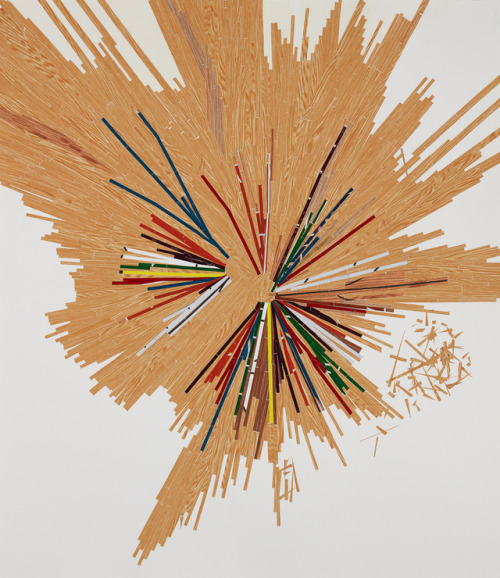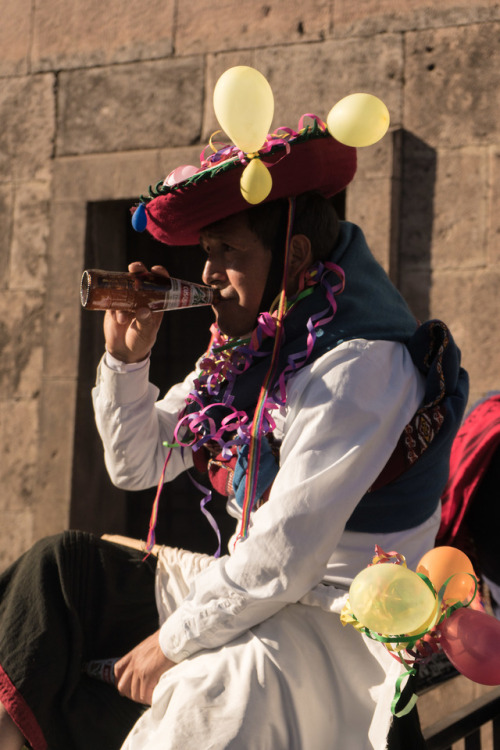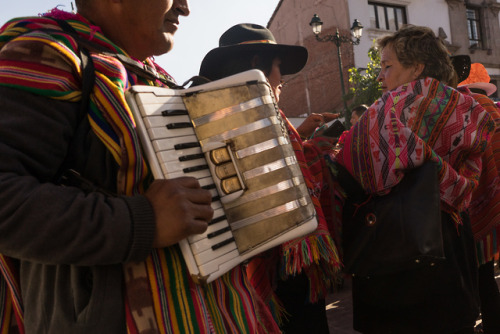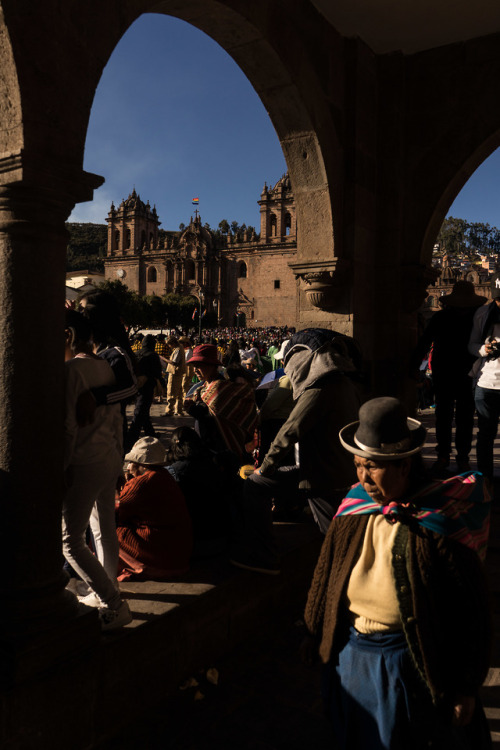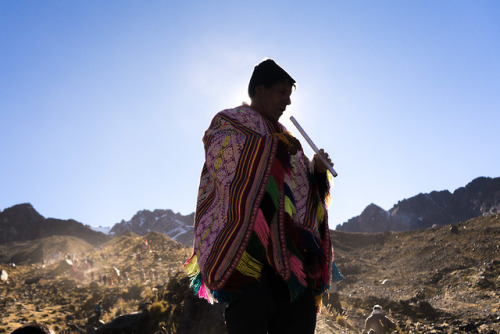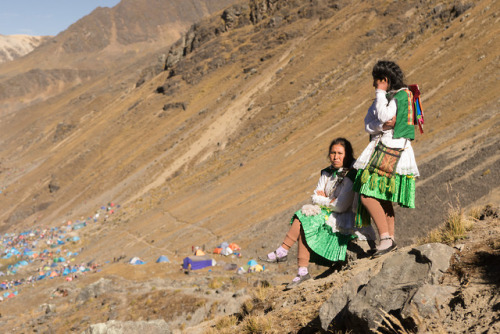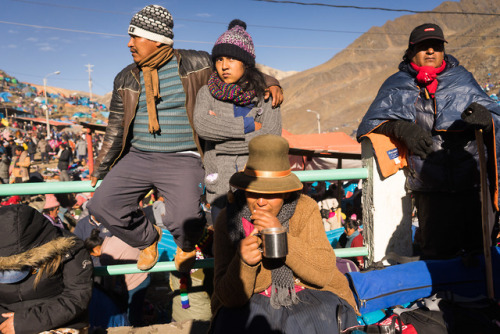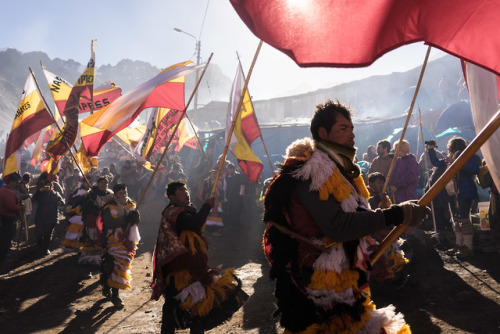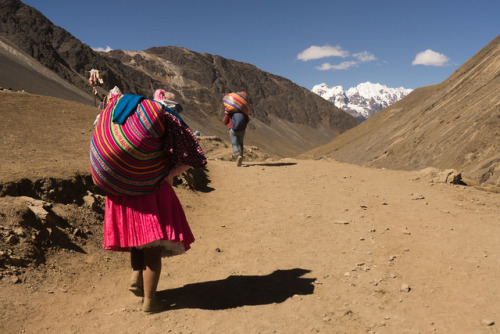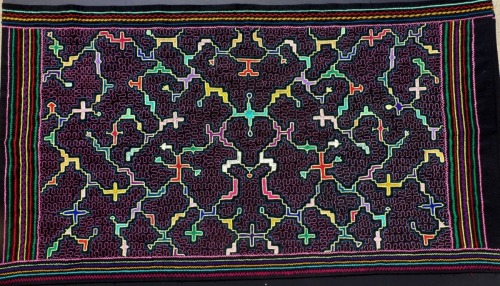#quechua
On this day, 3 March 1816, Juana Azurduy, a mestiza woman of Quechua descent from what now is Bolivia, led one of her anti-colonial military detachments, including a women’s unit known as the Amazonas, to victory in battle against Spanish troops near Villa.
More info about Indigenous resistance in the Americas in this book: https://shop.workingclasshistory.com/collections/books/products/500-years-of-indigenous-resistance-gord-hillhttps://www.facebook.com/workingclasshistory/photos/a.296224173896073/1933838676801273/?type=3
Post link
Aspirated plosives
Aspirations occurs in English in initial onsets like in ‘pat’ [pʰæt], ‘tack’ [’tʰæk] or ‘cat’ [’kʰæt]. It is not phonemic, since it doesn’t distinguish meanings, but it’s distinctive in Mandarin e.g. 皮 [pʰi] (skin) vs. 比 [pi] (proportion).
Non-phonemic aspiration occurs in: Tamazight, English, German, Swedish, Norwegian, Kurdish, Persian, Uyghur.
Phonemic aspiration: Sami languages, Icelandic, Faroese, Danish, Mongol, Kalmyk, Georgian, Armenian, North Caucasian languages, Sino-Tibetan languages, Hmong-Mien languages, Austroasiatic languages, Hindi-Urdu, Punjabi, Marathi, Gujarati, Odya, Bengali, Nepali, Tai-Kadai languages, Nivkh, many Bantu languages (Swahili, Xhosa, Zulu, Venda, Tswana, Sesotho, Macua, Chichewa, and many Amerindian languages (Na-Dene, Siouan, Algic, Tshimshianic, Shastan, Mayan, Uto-Aztecan, Mixtec, Oto-Manguean, Quechua, Ayamara, Pilagá, Toba, etc.)
Post link
Glottal Stop
Languages that have a phonemic glottal stop /ʔ/ - about 40% of all human languages. This is a very widespread consonant except in Indo-European, Niger-Congo, Turkic, Uralic, Mongolic, Dravidian, Koreanic and Japonic languages.
It’s almost universally present in the indigenous languages of the Americas, in Afro-Asiatic languages, in Austroasiatic and Austronesian languages, in Papuan languages, North Caucasian langauges, and in some Khoe, Sino-Tibetan, Daic, Uralic, Iranian, Turkic and Chukotko-Kamchatkan languages. It’s also present in Estuary and Scouse English as in ‘watter’ as /woːʔɐ/.
Post link
In 2007, María Sumire led new legislation to implement Article 48 from the Peruvian Constitution. Law 29735 introduces individual rights on the use, preservation, growth, recuperation, and diffusion of Indigenous languages. A public information campaign promoted the new laws (“Speak your language, it’s your right). The law facilitates regulated access to an interpreter when accessing social services, new public service hiring laws, and targeted bilingual education policies.
Cusco, Ayacucho, and other Indigenous regions funded not-for-profits to improve language services, schools were mandated to teach Quechua and other local Indigenous languages, and courts and other public services also incorporated bilingual processes.
In Cusco, Quechua is an official regional language, meaning that public servants must speak at least basic Quechua. It has one of the largest budgets and governance structures, due to high revenue from tourism, allowing the region to invest in Quechuan language autonomy.
Post link
Hello, summer We’re thrilled to be debuting two new exhibitions this month. David Wojnarowicz: History Keeps Me Awake at Night brings together the artist’s diverse body of work, which spans collage, photography, painting, writing, and activism. Pacha, Llaqta, Wasichay: Indigenous Space, Modern Architecture, New Art features the work of seven emerging and established Latinx artists based in the United States and Puerto Rico. Both exhibitions open to the public on Friday, July 13!
Post link
Coming soon! Pacha, Llaqta, Wasichay: Indigenous Space, Modern Architecture, New Art investigates contemporary art practices that preserve and foreground Indigenous American notions of the built environment and natural world. The three words in the exhibition’s title are Quechua, the Indigenous language most spoken in the Americas. Each holds more than one meaning: pacha denotes universe, time, space, nature, or world; llaqta signifies place, country, community, or town; and wasichay means to build or to construct a house. Learn more on whitney.org.
[Ronny Quevedo, quipu, 2017. Screen print, contact paper, and enamel on paper, 44 × 38 in. Collection of the artist. Photo credit: Argenis Apolinario.]
Post link
Cap (Chullu or Lluchu), Quechua, 1900,Art Institute of Chicago: Arts of the Americas
Kate S. Buckingham Endowment
Size: 34.3 x 23.5 cm (13 ½ x 9 ¼ in.)
https://www.artic.edu/artworks/85654/
Post link
Coca or Ceremonial Cloth (Inkuña), Quechua, 1900,Art Institute of Chicago: Arts of the Americas
Kate S. Buckingham Endowment
Size: 71.8 x 60.6 cm (28 ¼ x 23 7/8 in.)
Medium: Wool and cotton, plain weave with patterning warps; joined with wool in darning stitches
https://www.artic.edu/artworks/85491/
Post link
Dressed for the Fiesta
“A group of Quichua children from near Hacienda Zuleta Ecuador wait for a ride to town to celebrate a local fiesta.” - Thomas Aleto
Post link
Hi guys! I was just thinking about how different Spanish vocabulary can be from region to region, and how so much of that comes from local languages. So, here are some regional words I’ve noticed in my travels that are pretty essential! (This is obviously not an exhaustive list of all words or regions, but I’ve chosen some of the most common words I’ve come across personally).
★From Nahuatl (Central Mexico)
aguacate| avocado [from ahuacatl]
atole | atole (traditional Mesoamerican drink) [from atolli]
cacahuate | peanut [from tlacucahuatl]
chamaco | young boy [from chamahuac]
chapulín | grasshopper [from chapol-in]
chayote | chayote (type of squash) [from chayotli]
chicle | gum [from chictli]
chipotle | chipotle (pepper) [from xipoctli]
comal | comal (type of flat pan used for making tortillas) [from comalli]
cuate | twin, buddy, friend [from cuatl*, which means serpent and twin]
elote | corn (on the cob) [from ēlō-tl]
esquite | corn (in a cup) [from izquitl]
escuincle | small child [from itzcuintli]
guacamole | guacamole [from ahuaca-molli]
guajalote | turkey [from wueh-xōlō-tl]
huarache | sandal; also a type of food, like an elongated taco. [from
kwarachi]
jícama | jicama (root) [from xicamatl]
jitomate | tomato [from xictomatl]
milpa | corn field [from milpa]
molcajete | kitchen mortar & pestle [from molcaxitl]
mitote | *it’s a dance, but can also mean ‘party’ or ‘disturbance’ or ‘racket’ [from mitotiqui]
nopal | cactus (edible variety) [from nopalli]
papalote | kite [from papalotl,originally ‘butterfly’]
petate | a woven matt [from petatl]
popote | drinking straw [from popotl]
pozole | a pre-Colombian stew [from potzolli]
pulque | pulque (alcohol) [from poliuhqui, originally ‘spoiled’]
tamal | tamale [from tamalli]
tecolote | owl [from tecolotl]
tianguis | market [from tianquiztli]
tlacuache| opossum [from tlacuatzin]
tocayo | namesake (person with the same name or named after) [from toca-yō-tl]
zacate | grass, weeds, lawn [from saka-tl]
★From Quechua (Inca Empire, primarily modern day Peru but also dialects in Ecuador, Bolivia, Argentina, Chile, and others in diaspora)
callampa | mushroom [from k’allampa]
cancha | soccer field [from kancha]
carpa | tent [from karpa]
chacra | small farm [from chakra]
charqui | jerky [from ch’arki]
Chile | Chile (country) [*one theory is that Chile was named for the Quechua word chiri meaning ‘cold,’ though this is unproven.]
choclo | corn [from choqllo]
chullo | hat with earflaps [from ch’ullu]
cochayuyo | an edible type of kelp/seaweed [from kochu=lake and yuyu=vegetable]
cura | priest [from kuraq]
guacho |cowboy [from wakcha(orphan) –> huacho (alone)]. *I think this is also likely related to waxo/wacho/wachito/guacho which in Chile I heard used to mean both ‘orphan’ or ‘young boy.’
guagua | baby, infant [from wawa]
guano | bird droppings, fertilizer [from wanu]
mate | a small gourd used to hold tea [from mati]
Pachamama | mother earth [from pacha= earth] *religious concept
poncho | poncho [*likely from punchu]
poroto | bean [from purutu]
quinua | quinoa [from kinwa]
tincar | to have a presentiment or feeling about something in the future [from tinku, which means ‘hit’ or ‘collision’]
yapa/llapa | a bonus, something free, a sale (in advertising) [from yapa=help, increase, something extra]
zapallo | a type of squash/pumpkin [from sapallu]
★ From Mapudungun (southern Chile & Argentina)
cahuin | mess, riot, disturbance [from cahuin(?)]
guata | belly [from huata]
huinca | foreigner; or, person who is not Mapuche [from wigka]
pichintún | a little bit [from pichintun(?)]
pilgua | a large bag [from pilguay]
pilucho | naked [from piluchi (?)]
pololo/a | boyfriend/girlfriend [from piulliu, which means ‘fly’ (insect) that circles someone]
ruca | a thatched hut [from ruka]
quiltro | street dog, mutt [from quiltro (?)]
Peregrinación al santuario del Señor de Qoyllurit'i (parte II)
La fiesta religiosa más grande de Los Andes es la peregrinación al Señor de Qoyllurit’i. Miles y miles de fieles caminan cuesta arriba por más de 8 km hasta el santuario en las faldas del nevado Colquepunko, a más de 4,000 msnm. Si bien la fiesta tiene orígenes autóctonos, hoy en día es una fiesta sincrética que combina elementos andinos y católicos.
Perú, 18 de junio de 2019.
Post link
Peregrinación al santuario del Señor de Qoyllurit'i (parte I)
La fiesta religiosa más grande de Los Andes es la peregrinación al Señor de Qoyllurit’i. Miles y miles de fieles caminan cuesta arriba por más de 8 km hasta el santuario en las faldas del nevado Colquepunko, a más de 4,000 msnm. Si bien la fiesta tiene orígenes autóctonos, hoy en día es una fiesta sincrética que combina elementos andinos y católicos.
Perú, 18 de junio de 2019.
Post link
DÍA DE LOS DIFUNTOS OR DAY OF THE DECEASED
Today marks the end of one of the craziest few days we’ve spent so far in Ecuador, and I suspect it won’t be paralleled until this time next year. That’s because the city was awash with celebrations for Cuenca’s Independence Day (11/3) and Día de los Difuntos, or Day of the Deceased (11/2). Día de los Difuntos is a holiday meant to honor the life of those who have passed away. Traditionally on Día de los Difuntos, families visit cemeteries and take flowers, candles and food to those who have passed away. Indigenous families often eat lunch on top of the graves of their loved ones. But probably more noticeably, there are constant street festivals and parties in every sector on the city for all hours of the day – for four days straight!
There are two foods that are always served for Día de los Difuntos - colada morada, a purple corn drink, and guaguas de pan, sweet breads shaped like babies. The word guagua (pronounced kind of like wa-wa) is a quechua word that means baby or child, and like many other quechua words, it is often mixed with Spanish in everyday conversations. For example, “guagua” is another word Ecuadorians use to mean children.
The colada morada (or purple colada, or oatmeal drink) is made from cooking blackberries, blueberries, cinnamon, cloves, and other fruits and spices with a little oatmeal in the water until thick. The drink is then blended until fairly smooth and served lukewarm. For the past week, colada morada and guaguas de pan have been sold practically everywhere – bakeries, restaurants, street vendors, coffee shops, etc. On top of that, we were given both by our landlords, and I must say, their colada morada was definitely the best I’ve had.
But whew, I’m glad these holidays only happen once a year – it’s going to take me a week to catch up on sleep!
Post link

Hello everyone ! I haven’t used Tumblr in a while so I don’t know if any of you is still active but I’m posting this just in case.
I recently started giving language classes online as well as in Santa Cruz, Bolivia. I’m giving French and English lessons and my boyfriend is giving Quechua lessons. We’re just getting started so we don’t have a lot of clients yet.
I created a Facebook page and an Instagram account in order to reach more people. If any of you would like to follow us to help us build an audience this would be awesome ! I will post language tips and vocabulary lists like I used to do on Tumblr a few years ago when I was an active langblr haha
Here are the links :
https://www.facebook.com/IdiomasSantaCruz
https://www.instagram.com/idiomas_santa_cruz/
Also if any of you is interested in French, English, Spanish or Quechua lessons online, I will give you a 25% discount if you come from Tumblr. Our prices are already quite low as we live in Bolivia and charge bolivian prices. Please send me a message if you’re interested !
Wishing everyone a very nice day !
The Equipment and the Sunrise!
#wilderness #valleyofgods #cloudporn #shiva #deodar #northface #paragliding #gogreen #sunrise #canon #sonyalpha #forests #mountainslove
#organic #followmeto #mountaineers #mothernature #forests #artofvisuals #peace #living_destinations #himalayan #quechua #adventurous #himalayangeographic #redbull #travellingthroughtheworld #wandurlust #nepal #photography #morning (at Asia/Kathmandu)
Post link
These beautiful textiles are created in the Peruvian Amazon by the Shipibo Tribe. Inspired by the sacred plant Ayahuasca these pieces of art are said to contain the lyrics to the songs inspired by the this medicine. The patterns are encoded with light and sound of different medicine songs each with their own meaning. The different patterns contain different intentions, such as for healing illness, blessings and creativity, strength and protection, as well as psychic abilities. Check the links or take a trip to the jungle ;)
Blessings of Light and Love!
Post link
It is believed that Spanish or Portuguese are the most important languages of Latinidad. However, there are millions of people that speak many indigenous languages throughout Latin America. Spanish and Portuguese languages are one thing that unites most of Latin America, but those languages were imposed on the region through European colonization. It’s one reason some Mexican writers have rejected Spanish to write in indigenous languages.
There are some apps that can can be used to help you learn some indigenous languages of Latin America. Unfortunately, there aren’t many, but here are a few resources:
1. Náhuatl - With an estimated 1.5 million speakers, Náhuatl is the most commonly spoken indigenous language in Mexico.
- Vamos a aprender Náhuatl by kernaia: available on iOSandAndroid
(Spanish only)2.Mixtec - The Mixtec languages belong to the Otomanguean language family of Mexico and they are spoken by over half a million people, and can include up to 50 different dialects.
Vamos a aprender Mixteco by kernaia: available on iOSandAndroid
(Spanish only)3.Quechua- Quechua is one of the most widely spoken indigenous languages in the Americas and encompasses many different dialects. The Quechua people primarily live in the Andes and highland regions of South America and include nearly 8 million people.
Habla Quechua by PromPerú: available on iOSandAndroid
(available in English, French, German, Portuguese, and Spanish)4. Purépecha - The Purépecha or Tarascans are a group of indigenous people centered in the northwestern region of Michoacán, Mexico. The languages is spoken by a quarter-million people.
- Vamos a aprender Purépecha by kernaia: available on iOSandAndroid
(Spanish only)5. Jopará (Guaraní) - Jopará is a dialect of the Guaraní indigenous language and is spoken in Paraguay. The majority of Paraguayans speak some form of this dialect, as it is a mixture of Guaraní and Spanish loan words.
DuoLingo - available on iOS,Android, and Windows Phone
More helpful apps:
1.SimiDicbyEl Instituto de Lenguas Y Literaturas Andinas-Amazónicas (ILLA) - an interactive app for Aymara, Quechua, and Guaraní: available on Android
2.Instituto de Investigación de la Amazonía Peruana (IIAP) - the IIAP has created apps for learning indigenous languages from the Amazon region of Peru and Brazil. Though these apps are geared for children, they are helpful for beginning to familiarize yourself with the languages: available on Android (Spanish only)
After doing extensive research, these were the only free apps I was able to find, but if you know of any other free apps for learning indigenous languages of Latin America, please add on!
Inti Raymi (Quechua: inti = the sun; raymi = celebration)
Inti Raymi is the celebration of the God Sun, the most venerated god in Inca religion. According to Inca tradition, Pachatutec, the first Inca, created the Inti Raymi to celebrate the winter solstice which marked the first day of the New Year in the Inca calendar. The winter solstice begins on June 21 but according to the Incas, the sun stays in the same place until the 24th when it finally rises. Therefore, every year on June 24 the festival of the Inti Raymi takes place in the city of Cusco… Read more
Post link

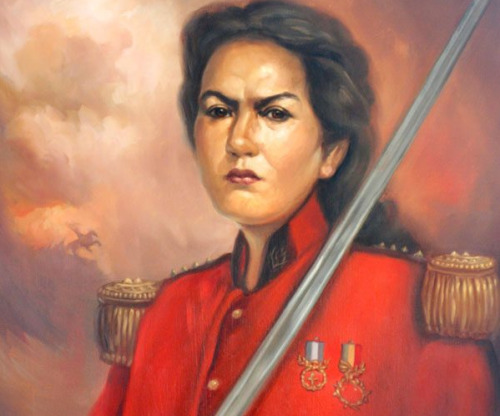
![Aspirated plosivesAspirations occurs in English in initial onsets like in ‘pat’ [pʰæt], ‘tack’ [’tʰæ Aspirated plosivesAspirations occurs in English in initial onsets like in ‘pat’ [pʰæt], ‘tack’ [’tʰæ](https://64.media.tumblr.com/336a13765fb031784e1593639b0bb427/49a2b1dfe50b20fa-60/s500x750/989e8050d39083e2ca55c99084db868956ce4409.png)




